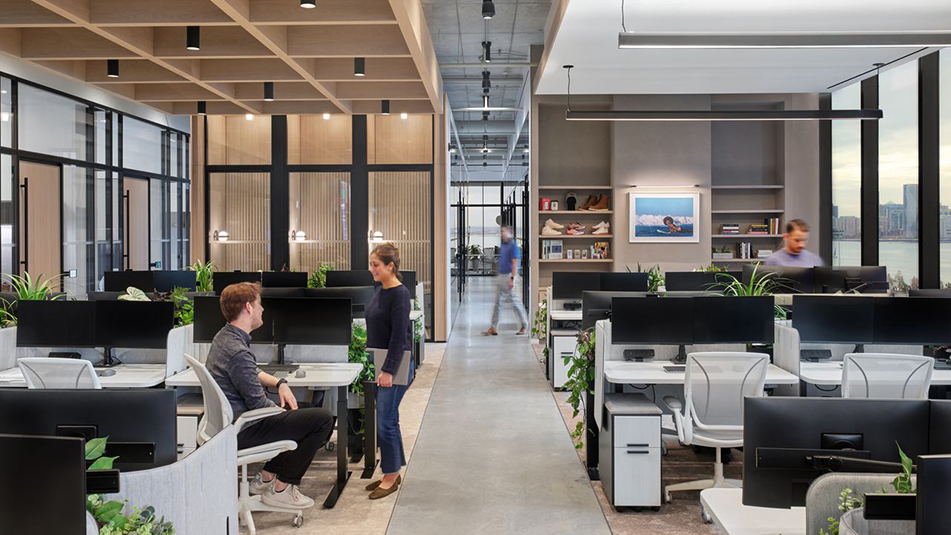Workplace Strategy: Leveraging Your Space to Attract and Retain Top Talent
Competition for the best talent is fierce, and forward-thinking organizations are re-evaluating the quality of their workspace to attract and retain top talent. By embracing workplace strategy, companies can create a workspace that offers employees a choice of where to work, provides spaces for various styles of working, and balances “me” and “we” spaces to support productivity. Having engaged employees also compels companies to provide amenities and resources that enhance employee well-being and strengthen company culture.
Workplace strategy focuses on marrying three important aspects of the modern workplace: 1) applying better space utilization metrics, 2) optimizing real estate costs, and 3) updating an office space to meet current trends in design and technology. Factoring in employee satisfaction and a company’s ability to attract and retain top talent, there is a clear business imperative for creating a work environment that inspires, motivates, and connects employees.
With the specific intent of creating solid benchmarking data, Margulies Perruzzi Architects (MPA) maps the workplace design trends of its clients within the Greater Boston area. While the design solution for the ideal workplace will vary by industry and company, the design challenges remain constant.
For a workplace strategy to be successful in any industry, businesses must focus on these critical aspects to:
- Inspire creativity with collaboration and technology, support for mobile work, and quiet space;
- Attract and retain talent by creating community, supporting social interaction, and promoting wellness; and
- Enhance mission engagement by crafting an image and increasing brand awareness.
MPA’s workplace strategy research has shown that there are specific design solutions that help a company express its culture, industry, and leadership while producing quantifiable contributions to the bottom line. Further, the key to creating a high performing workspace is to provide an environment that supports business objectives and prepares for evolving workplace trends. Viewing the workplace as an important physical asset for attracting and retaining top talent, there are three workplace design principles that companies should consider as they plan real estate solutions for the future.
Create community
Offering spaces for people to gather, eat, meet, learn, and play is one of the top ways to improve employee engagement. In today’s workplace design, there is an effort to cluster these activities together to create a central hub or common area that can serve both business and social activities.
Support social interaction
Supporting social interaction between employees is a top selling point for new talent and can help spark new ideas, increase employee engagement, and create a sense of well-being. Spaces that reinforce social interaction, such as corporate cafés, fitness centers, game rooms, and outdoor seating areas, are fundamental mechanisms for enhancing a strong social culture. These spaces serve as important catalysts for both planned and chance encounters, facilitating the casual interactions and professional collaboration that makes workers more content and productive.
Promote wellness
To further attract and retain talent in an increasingly tight job market, companies are focusing on promoting wellness in the workplace. Companies recognize that healthy workers perform better and are more productive, and there is an effort to provide workers with exercise, movement, and relaxation during the work day. Programs like the WELL Building Standard can offer companies a clear direction to increase and promote wellness within the organization.
In the competitive corporate landscape, making the workplace an effective tool for any business that considers people to be their primary asset is becoming standard practice. While the initial capital cost for designing and building the ideal workplace may be significant, the return on that investment is revealed through the company’s ability to succeed in attracting and retaining the best talent for their industry. Leaders with vision understand that the work environments they create for employees play a significant role in achieving that goal.
More information may be found at www.mp-architects.com.


